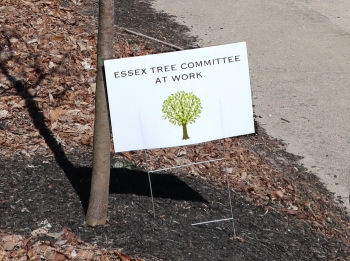
Once upon a time, I called a newspaper editor and inquired if she needed a garden column. She said they’d give me a try, and my regional column, Green & Growing, launched in February 2013. I started out imagining that I’d write veggie and flower garden how-to articles with an organic flair and a local bent.
But my subject, the plant world, had other ideas. As I keyboarded tales from the landscape of the Connecticut River Valley and Long Island Sound shoreline, the plants themselves made me aware of their world and their partners—the birds, insects, wildlife, soil, water, and weather. Now, ten Earth Days have passed and the column has appeared about 150 times.
Nature, I was reminded, is like a dancer with an indescribably intricate routine. We humans assume we can rely upon our dance partner entirely and indefinitely. But everything has its limits.
As I wrote about invasive plants, plant diseases, jumping worms, declining numbers of pollinators, and the precarious lives of urban and suburban street trees, the message was more and more troubling.
Conventional garden topics seemed trivial by comparison. I found myself unable to write about one tomato variety versus another, the colors available in zinnias, or the latest news in lawn care.
Instead, the work of dedicated conservation volunteers caught my attention. I saw the difference made by hardworking garden clubs, met inspiring forest managers and aspiring master gardeners, and visited farmers who experimented with new growing methods, including ocean farmers. I met insightful garden center owners, reviewed some eye-opening books, and spoke with stimulating authors.
I heard the success stories of people who planted street trees in New London and visited the bird gardens at Meigs Point Nature Center in Madison. I saw the knotweed warriors who successfully fight this invasive plant with simple clippers and strategic timing in Niantic, Lyme, and Old Lyme.
The popularity of native plants may be one of the most remarkable turnarounds of the past decade. According to more than one expert, native plants in our backyards and streetscapes can directly improve the survival of insect species. All food chains ultimately involve insects, both as ecosystem engineers and as food for other creatures. My investigations have concluded that insect Armageddon is not an academic question; it is an impending threat.
See the complete story and find links to helpful plant-finder databases at Zip06/TheDay.
